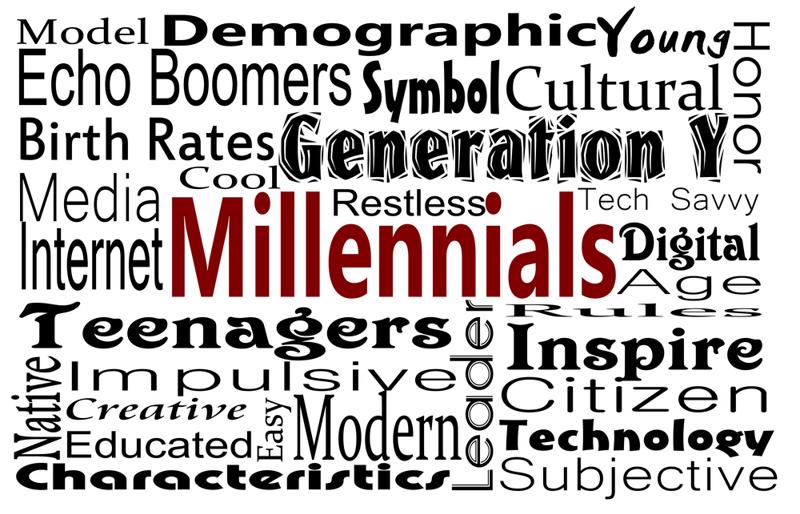
Are you treating all of your employees the same way? You shouldn’t be. Millennials at work are reshaping the workplace, and managers have a lot on their plate. They have to think big while also making sure that regular office tasks are carried out. But along with their day-to-day functions, they must also understand why employees act and think the way they do. They can then go about better addressing challenges and recognizing and appreciating employees for their hard work, especially when considering that workforces usually consist of generational gaps.
“Companies must first understand that their workforce may consist of people born in various generations.”
To create a cohesive workplace, companies must first acknowledge that their workforce most likely consists of people born in various generations. While experts haven’t come to a complete consensus on how generations fully differ, trends in their arguments exist. Here are a few examples:
Millennials
Millennials at work are reshaping the workplace. Unlike baby boomers and Generation X, Millennials are saddled with student debt. A Deloitte report noted the average loan size for first-time degree students at four-year colleges between 2001 and 2002 and 2012 and 2013 rose a whopping 55 percent. This generation has not only experienced a spike in student loan debt, but they also graduated from college right as the Great Recession was in full swing and jobs to pay off that debt were hard to come by.
Generation X
Stuck between millennials and the large baby boomer generation is Generation X. Allan Schweyer, former senior researcher and advisor for The Incentive Research Foundation, noted that being stuck in the middle may shape how this generation approaches their position in society and the workforce. Generation X, Schweyer said, may be even more distrustful of businesses than any generation before or after them because they were the first to witness breakdowns between employers and employees.
Baby Boomers
The largest generation and one that is rapidly moving toward retirement. Schweyer noted that baby boomers come from an era where you live to work. However, like many generations after them, they also value workplace flexibility even though they may feel uncomfortable with the idea of working from home.

To better appreciate and recognize employees, managers should understand how generations differ.
Understand the generational gap. Approach employees differently.
By realizing what has molded these generations (why the gap exists), companies and their managers can then try to understand what these employees are looking for.
Millennials are widely studied, with numerous surveys highlighting ways in which they differ from older generations. The differences that set millennials apart from people of similar age in prior years largely reflect trends that have impacted all age groups. Interestingly, when looking at the numbers, millennials’ rate of job change is not substantially different from that of prior generations. In sum, millennial turnover rates appear to be a misinterpretation of age effects.
Barry Salzberg, CEO of Deloitte Global, said in a statement that millennials are very interested in how companies take a big picture approach when developing their workforce. It’s not just about the products and profits. It’s about the people too. They work for a higher purpose.
“The message is clear. When looking at their career goals, today’s millennials are just as interested in how a business develops its people and how it contributes to society as they are in its products and profits,” said Salzberg. “These findings should be viewed as a wake-up call to the business community, particularly in developed markets, that they need to change the way they engage millennial talent or risk being left behind.”
“Companies need to address millennials with innovative perks and benefits.”
Along with career development, companies need to address millennials with innovative perks and benefits. Some companies, such as Fidelity, are now offering employees perks to help repay student and personal loans. This is up to $2,000/yr for all full-time employees at the manager level or below.
Other generations, such as baby boomers and Generation X, may be less enticed by these perks, especially if they’re not swamped with student debt. Instead, it may be best to approach these older generations with perks and benefits that address their workplace values such as hard work (for both) and independence (Generation X).
Going Beyond the Gap
While generational gaps do exist, managers must also remember to analyze other characteristics that define their teams.
“For any organization, it is very important to consider what motivates its employees. The effort to understand human traits, shifts in attitudes and behavior, social trends and ever changing employees (i.e. generations) is vital for the success of any business,” noted Tahseen Bahoo, assistant manager at International Institute of Certified Innovators & Entrepreneurs and author of Motivating and Rewarding Generation Y Employees.
By understanding the intricacies of your workforce you can better help employees solve problems in the form of specific perks and benefits. The end result is a more positive staff, increased efficiency, productivity, and happiness.
